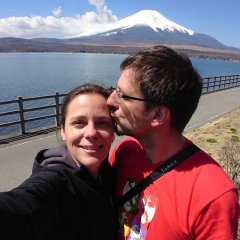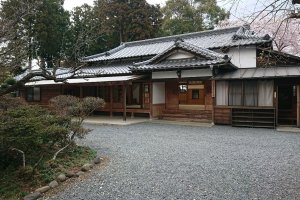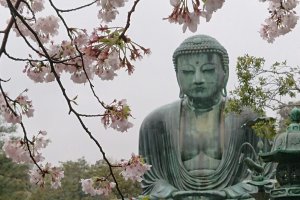Breathtakingly beautiful, Japan is filled with mountains, covered with forests and anywhere is rarely more than an hour or two from the ocean. With its mix of peace and noise, old and new, Japan's incredible variety and depth of culture means it pretty much has it all. And while train may be the easiest way to see the country driving allows you to discover just that little bit more.
Here is part two of our campervan trip through the middle of the country.
Driving between Iwama and Kyoto
Iwama (岩間町 Iwama-machi)
Our journey began by travelling to Iwama, a small town about 100km north-east of Tokyo. It's known for its Iwama style of aikido, a martial art that my husband has been practising for many years. Visiting its Ibaraki Shibu Dojo, Aiki Shrine and meeting live-in students from around the world was high on our agenda.

Kamakura (鎌倉市 Kamakura-shi)
We spent two days in Iwama before our next stop of Kamakura, about 50km south-west of Tokyo. Once the capital of a feudal military government, Kamakura today is a vibrant coastal town with surfers, summer festivals, ancient Buddhist temples and Shinto shrines. When you visit the Great Buddha of Kamakura (鎌倉大仏, Kamakura Daibutsu), going inside is an absolute must.

Izu Peninsula (伊豆半島 Izu Hantō)
A book about sushi inspired us to travel to Izu Peninsula. Izu is known for its wasabi fields, and while there we stayed at Shirakabeso, a traditional onsen ryokan with an amazing interior. It's restaurant was first class restaurant with dinner and breakfast absolutely divine. And there was, of course, the wasabi. Following specific rules of preparation, the wasabi here is amazing.

Nagoya (名古屋)
From Izu we set off for a long drive to Nagoya, Japan's fourth largest city and an industrial hub home to Toyota Industries and Mitsubishi Motors. The city has plenty to offer but our schedule only allowed a couple of hours, so our focus was on Nagoya Castle and trying out some of the local dishes. A must-try is their local ramen, their miso katsu and their famous miso beer, Kinshachi.

Sekigahara (関ヶ原)
Our next stop of Sekigahara came about by chance when my husband spotted a sign on the expressway and remembered how important it was from his history lessons. The Battle of Sekigahara, fought on 21st October 1600 with around 200,000 men, was one of Japan's bloodiest and lead to the establishment of the Tokugawa Shogunate and the Edo Period. Now, there are many tourist spots with signs and maps, as well as samurai-related souvenir shops.

Kyoto (京都市 Kyōto-shi)
A treasure chest of gardens, tea houses, sake bars and narrow streets, Kyoto is a place where time seems to have stopped. Countless temples and shrines can be found here like Fushimi Inari Shrine, Kinkaku-ji, Ginkaku-ji, Daitoku-ji, and Kiyomizu-dera with one of the best views over the city. Don't forget Nishiki Market, and the sake brewery Gekkeiken.

Go back to part one or continue reading part three...




























